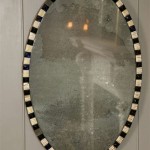How To Mirror PC Screen On TV
Mirroring a PC screen to a TV offers a larger viewing experience for various activities, from enjoying media content to delivering presentations. This expanded display can enhance productivity and entertainment. Several methods facilitate this screen mirroring, each with its advantages and technical requirements.
Using an HDMI Cable
A wired HDMI connection provides a reliable and high-quality mirroring solution. This method typically offers minimal latency, making it ideal for activities like gaming or video editing where real-time responsiveness is crucial.
Here are the steps involved:
- Locate the HDMI ports on both the PC and the TV.
- Connect the two devices using an HDMI cable.
- On the PC, press the Windows key + P to open the projection settings.
- Select "Duplicate" to mirror the PC screen on the TV.
- Adjust the TV's input source to the corresponding HDMI port.
Wireless Mirroring with Miracast
Miracast offers a convenient wireless solution for mirroring screens, eliminating the need for cables. This technology allows compatible devices to connect and share displays wirelessly. It's important to verify that both the PC and the TV support Miracast before attempting this method.
To mirror using Miracast:
- Ensure both the PC and TV are connected to the same Wi-Fi network.
- On the PC, open the Action Center by pressing the Windows key + A.
- Click on "Connect".
- Select the TV from the list of available devices.
- Follow any on-screen prompts on the TV to complete the connection.
Using Chromecast
Chromecast is a popular streaming device that can also facilitate screen mirroring from a PC. This method leverages the Google Chrome browser and allows for mirroring of the entire desktop or specific tabs.
Here's how to mirror using Chromecast:
- Ensure both the PC and Chromecast are connected to the same Wi-Fi network.
- Open the Chrome browser on the PC.
- Click the three dots in the upper right corner (More).
- Select "Cast".
- Choose the Chromecast device from the list of available devices.
- Select "Cast desktop" to mirror the entire screen or "Cast tab" to mirror a specific browser tab.
Utilizing DLNA
DLNA (Digital Living Network Alliance) technology allows for media streaming and sharing within a home network. While not true screen mirroring, DLNA enables users to access and play media files stored on their PC through their compatible TV.
Here are the general steps for using DLNA:
- Ensure both the PC and TV are connected to the same network.
- Enable media sharing on the PC. (This process may vary depending on the operating system.)
- Access the media server through the TV's interface.
- Select the media files to play on the TV.
Third-Party Software Options
Several third-party applications offer advanced screen mirroring functionalities, sometimes with additional features like remote control or multiple device support. Researching and choosing reputable software is crucial for optimal performance and security.
Considerations when choosing third-party software include:
- Compatibility with the operating system and TV.
- Features offered, such as remote control or multiple device mirroring.
- User reviews and ratings.
- Security and privacy policies.
Troubleshooting Common Issues
Occasionally, technical issues can arise during the screen mirroring process. Understanding common problems and their solutions can save time and frustration.
Some troubleshooting tips include:
- Checking network connectivity: Ensure both devices are on the same network and have a stable internet connection.
- Updating drivers: Outdated graphics drivers can sometimes interfere with screen mirroring. Update drivers to the latest versions.
- Restarting devices: A simple restart of both the PC and TV can often resolve minor glitches.
- Verifying compatibility: Double-check that both the PC and TV support the chosen mirroring method.
- Checking firewall settings: Ensure the firewall isn't blocking the connection between the devices.
Optimizing the Mirrored Display
Adjusting display settings can significantly improve the viewing experience on the mirrored TV. Optimizing resolution and aspect ratio ensures content appears correctly and maximizes visual quality.
Steps to optimize the mirrored display:
- Adjust the screen resolution on the PC to match the TV's native resolution for optimal clarity.
- Configure the aspect ratio to avoid distortion or black bars.
- Adjust the TV's picture settings, such as brightness and contrast, for the best viewing experience.

How To Screen Mirror Stream Laptop Pc Tv Wireless No Adapters

How To Cast Your Pc Tv Computer Screen Mirror Windows 10 Smart

How To Tutorials Screen Mirror Pc Or Laptop Tv Using Chromecast

How To Cast Your Laptop Pc Screen Tv In 2024

How To Mirror Desktop Laptop Screen On Smart Tv No App

Connecting Laptop To The Tv With Just A Few Simple Steps Resource Centre By Reliance Digital

How To Screen Mirror Your Laptop Pc Television Wireless Easy

Free Ways To Mirror Pc

How To Cast Computer Or Laptop Tv Screen Mirror Pc Windows 10 With Any Browser One
Help Library Lg Tv Mirroring Can I Mirror My Pc Screen To Hk








